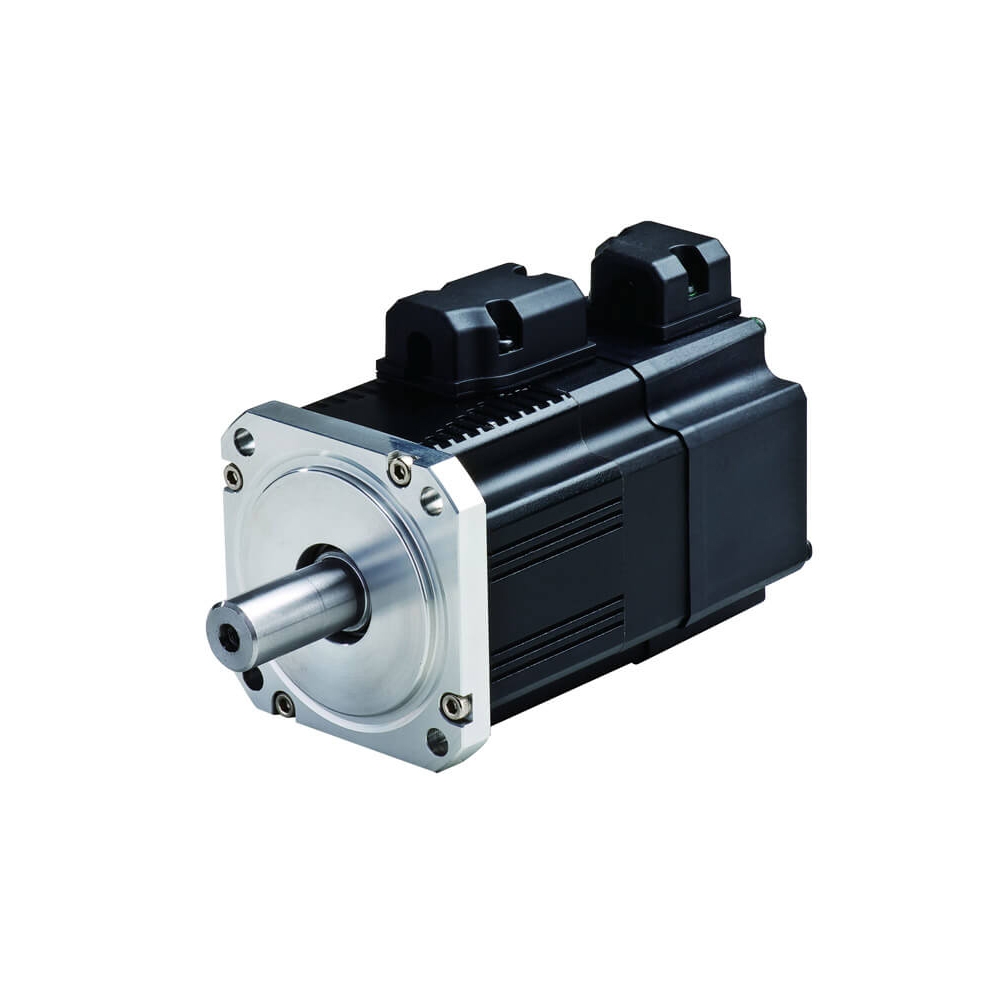Specialized in industrial automation meeting various industries needs, Rotalec provides motion control solutions from the beginning. A variety of products is offer from brush DC, Induction AC, coreless, ironless, BLDC, BLAC, linear, frameless, voice coil, stepper, synchronous AC and many more. However, what are the characteristics that make a motor a servo motor?
Currently the accepted norm of a “Servo Motor” is a brushless DC or AC permanent magnet synchronous 3 phase motor with feedback device. While there is truth to this, it is a very narrow application of the term. A servo motor can be any motor, rotary or linear. What makes a servo is not the motor type, but rather the feedback loop. A controller commands an action from a motor that can be force/torque, velocity, or position. The controller receives feedback from a device mounted to the motor that provides the actual value the motor responded with. The controller calculates the error – difference in actual measured value versus commanded value to determine the next command signal. This is known as a negative feedback loop.
The simplest analogy to a well-known servo process is the temperature controller in a home for heating and air conditioning. There is a user set point temperature that defines what the output action is. The feedback is provided by a temperature sensor. The output is a simple on/off signal.
By having a feedback loop in the system, it is possible to evaluate its response and this response provides precise control of motor attributes such as torque/force, speed, position. This is known as a servo update rate. In fact, it is possible to get loop updates of 8KHz or faster.
With modern digital signal processors, it is now possible to offer full servo closed loop control of motors that were previously run as open loop only, such as the bipolar stepper motor. Traditionally stepper motors have been used for open loop positioning to great success. Although, by placing a feedback device in the form of an encoder and closing the loop, it is now possible to take these hybrid permanent magnet motors and turn them into a servo motor.
Doing so offers several advantages in many industrial applications where intermittent motion is required. High speed pick and place, as well as indexing are all great applications for a servo motor of this type. The high pole count offers very high torque density per frame size. One really interesting thing about using a stepper motor as the motor for closed loop servo system is their ability to run more efficiently and at a cooler temperature than the standard 6-8 pole permanent magnet brushless motors. This is particularly important for battery powered applications.
Motion control is an area where there are many approaches you can take to solve a particular problem. On the other hand, even if a component works well, it does not mean it cannot be optimized, whether in size reduction, price reduction, performance increase or else. It may be worth reassessing your needs to stay competitive on the market and on the cutting edge of technology.
Currently the accepted norm of a “Servo Motor” is a brushless DC or AC permanent magnet synchronous 3 phase motor with feedback device. While there is truth to this, it is a very narrow application of the term. A servo motor can be any motor, rotary or linear. What makes a servo is not the motor type, but rather the feedback loop. A controller commands an action from a motor that can be force/torque, velocity, or position. The controller receives feedback from a device mounted to the motor that provides the actual value the motor responded with. The controller calculates the error – difference in actual measured value versus commanded value to determine the next command signal. This is known as a negative feedback loop.
The simplest analogy to a well-known servo process is the temperature controller in a home for heating and air conditioning. There is a user set point temperature that defines what the output action is. The feedback is provided by a temperature sensor. The output is a simple on/off signal.
By having a feedback loop in the system, it is possible to evaluate its response and this response provides precise control of motor attributes such as torque/force, speed, position. This is known as a servo update rate. In fact, it is possible to get loop updates of 8KHz or faster.
With modern digital signal processors, it is now possible to offer full servo closed loop control of motors that were previously run as open loop only, such as the bipolar stepper motor. Traditionally stepper motors have been used for open loop positioning to great success. Although, by placing a feedback device in the form of an encoder and closing the loop, it is now possible to take these hybrid permanent magnet motors and turn them into a servo motor.
Doing so offers several advantages in many industrial applications where intermittent motion is required. High speed pick and place, as well as indexing are all great applications for a servo motor of this type. The high pole count offers very high torque density per frame size. One really interesting thing about using a stepper motor as the motor for closed loop servo system is their ability to run more efficiently and at a cooler temperature than the standard 6-8 pole permanent magnet brushless motors. This is particularly important for battery powered applications.
Motion control is an area where there are many approaches you can take to solve a particular problem. On the other hand, even if a component works well, it does not mean it cannot be optimized, whether in size reduction, price reduction, performance increase or else. It may be worth reassessing your needs to stay competitive on the market and on the cutting edge of technology.
